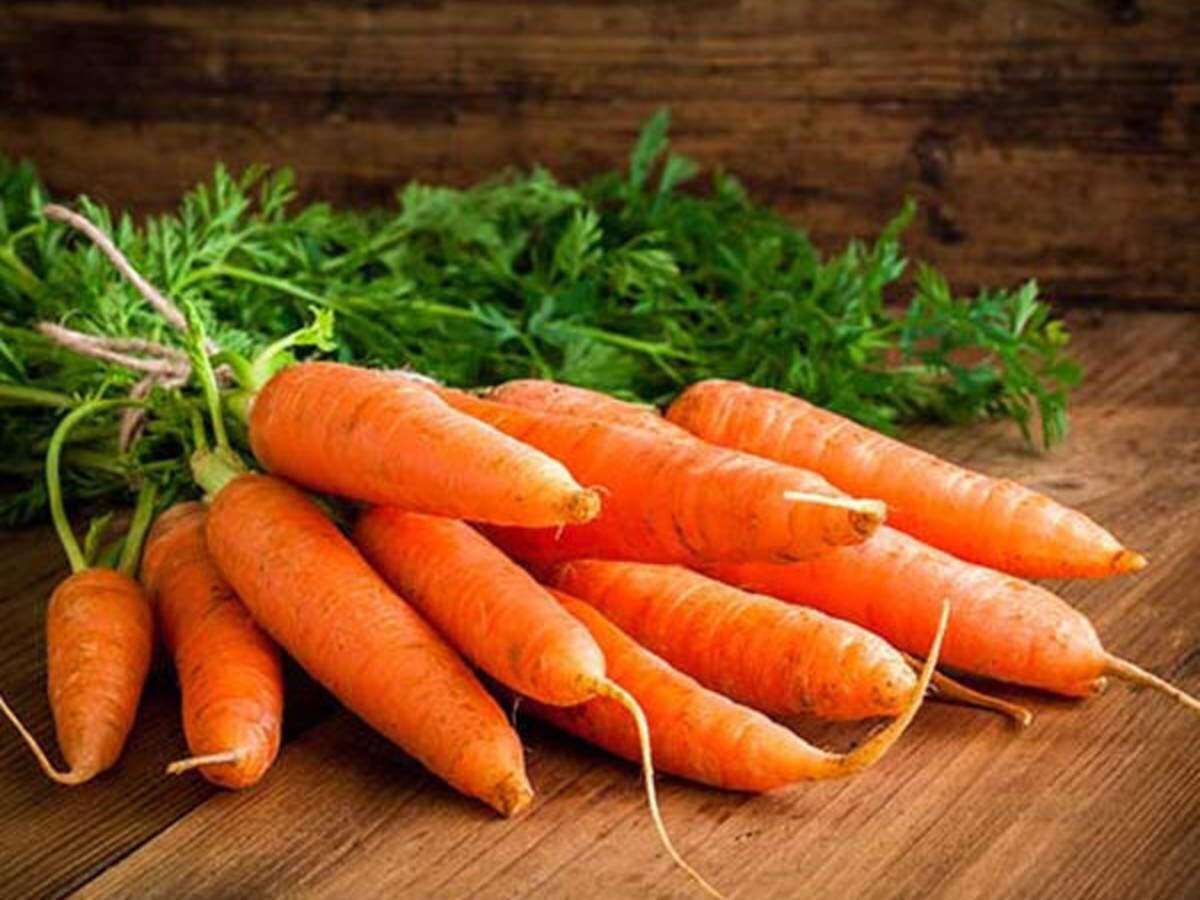Your Year-Round Guide to Growing and Caring for Potatoes
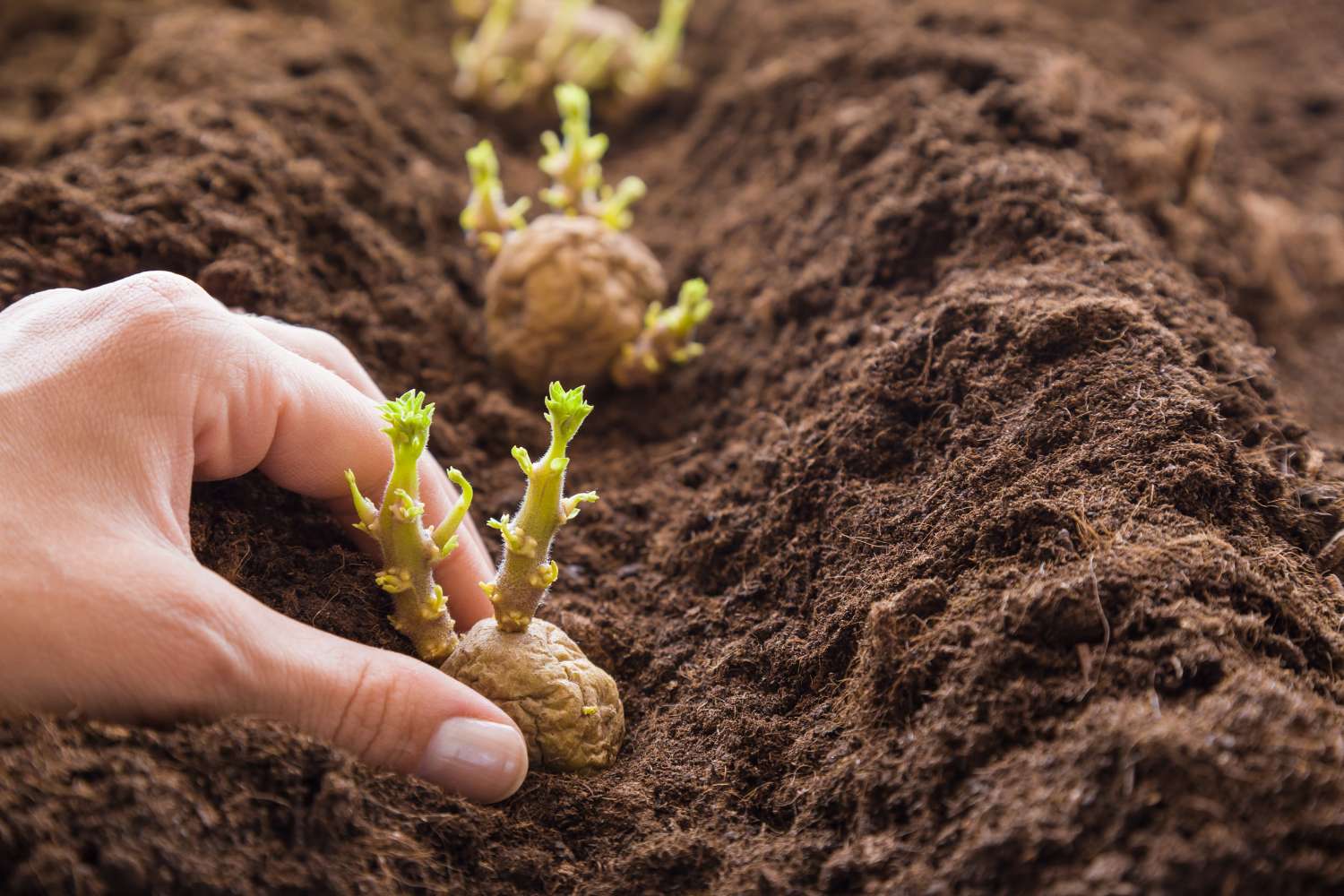
Table of Contents
Everything tastes better when you grow them on your own. Potatoes are no different. Learning to grow potatoes on your own is an easy kitchen gardening skill that will give you great satisfaction. Potatoes are generous vegetables. With minimal effort, you can yield a great harvest.
Given how adaptable potatoes are, it is easy to grow them in several ways and in different soil types. They demand very little attention and grow fast. If you are trying to learn how to grow & care for potatoes, this little guide will come in handy.
How to Grow and Care for Potatoes
We have said it before, and we will say it again, potatoes are an easy and generous vegetable type. They don’t need much and can be grown in different ways. Here is a step-by-step guide on how you can get your own potato harvest.
1. Get Your Seeds Ready
The potatoes used for planting are called ‘seed potatoes’ and are generally available in bags or nettings. Make sure when choosing the seed potatoes they are certified and disease resistant. These should also have buds or eyes that can develop the stem and leaves. Once you have brought these seeds home, it is important you prepare them for further plantation.
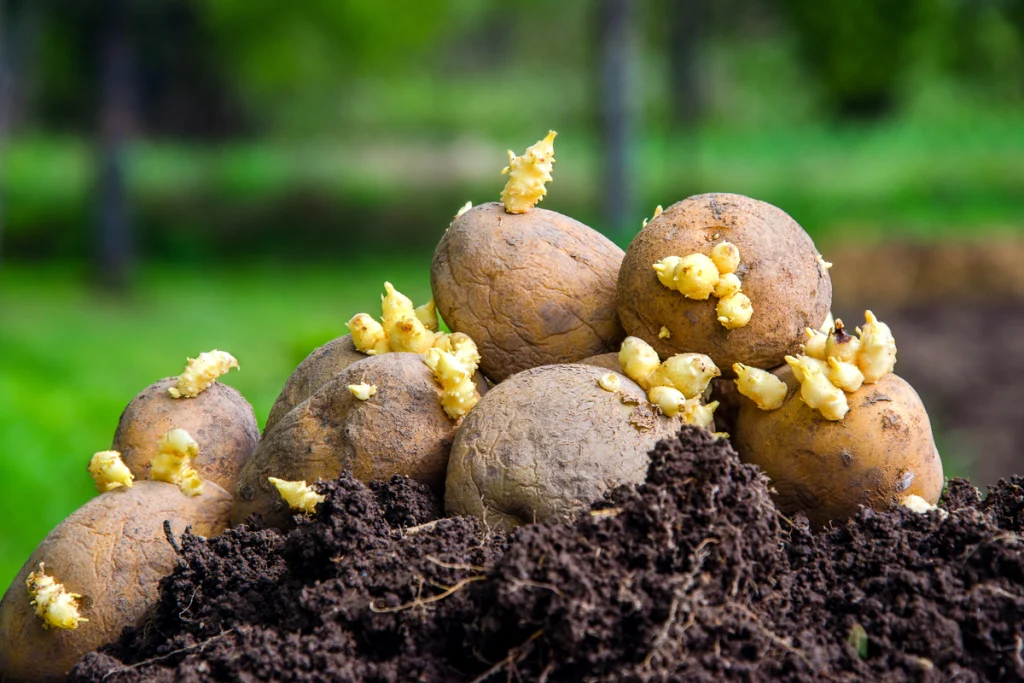
As soon as you get them, break them free and lay them on a tray. You can put them on any tray, like an old egg carton. Once done with that, leave them in a bright-frost-free place to let them sprout. If you can’t find a place outside, keep them on a windowsill indoors but expose them to natural heat. The terminology of this particular step is- “Chitting.”
This isn’t the most important step in gardening the potato, but it speeds up the process. So, when you actually plant them, they will be in their prime, ready to send out their roots. If you couldn’t chit your seed potatoes, remember, it is perfectly okay. You can plant them directly just as it is. However, there is another thing to keep in mind. While small potatoes can be planted as a whole, bigger potatoes will need a little work. Just two days before planting big seed potatoes, use a sharp knife and cut them into pieces. Make sure each piece has at least two eyes.
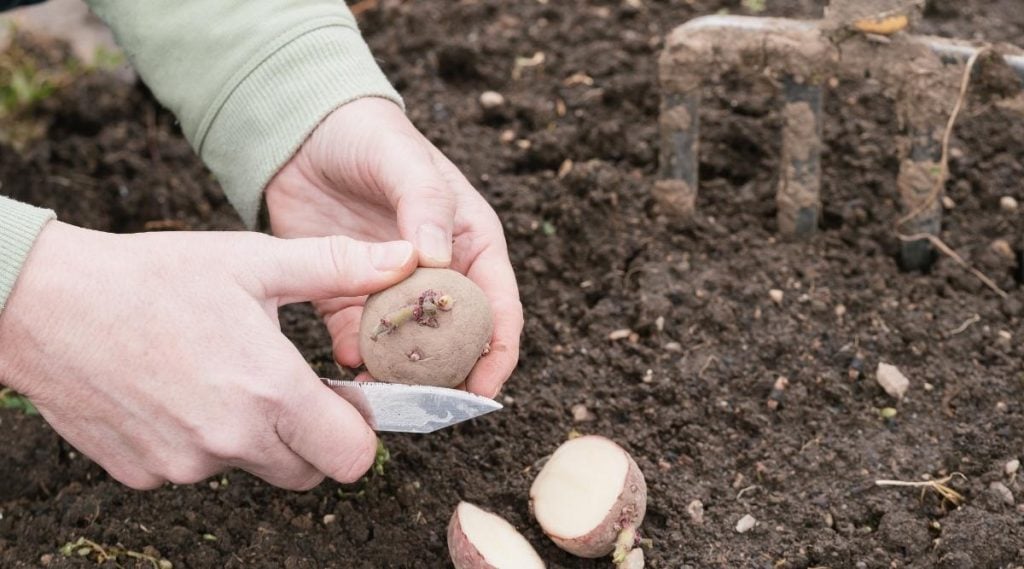
2. Prepare Your Soil
It is important to prepare your soil before you plant your seed potatoes. Potatoes are like fertile, well-drained soil that is slightly acidic. They flourish the best when they are planted in rich compost-amended soil that has been fertilized a few times. Make sure you apply slow-release fertilizers.
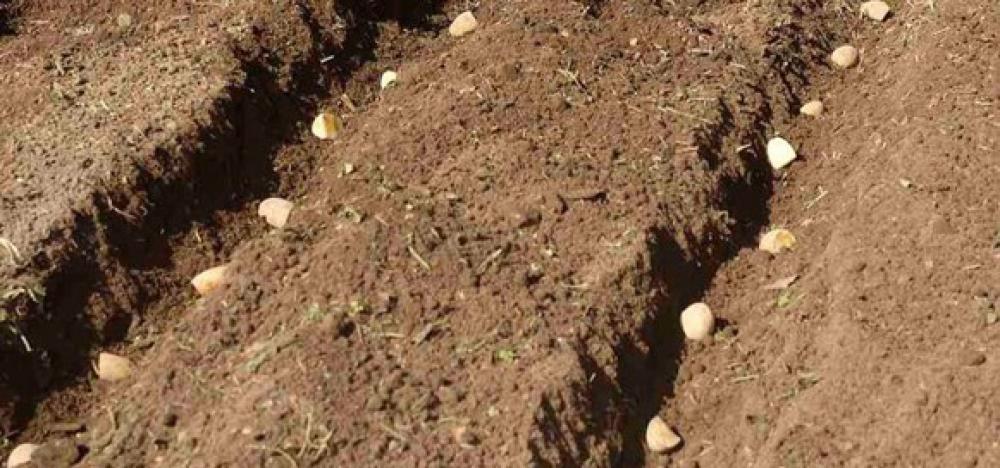
To do this, rake the whole bed clean. Using a garden tool, mark rows that are 24-36″ apart. You can also make 2-4″ deep furrows that will help you plant your potato. Taking measurements beforehand will help you space your seeds better.
3. Planting The Potato
Remember this; Potatoes love the sun. So, make sure you plant your potatoes in a spot that gets enough sunlight. Potatoes need at least 6 hours of sun every day. You can plant potatoes in various methods.
Check them out here-
Growing in Trenches
Growing potatoes in trenches is the traditional method of growing this vegetable. To use this method, follow these steps.
- Dig a hole about 4-6 inches deep in the soil, put the seeds one foot apart, and then backfill with about 2 inches of soil.
- When the plant has grown about 6 inches, add more soil to cover it. However, do not cover the whole plant. Leave the top two leaves above the ground area. Continue to fill more soil around the plants as the plants grow till they are big and mature.
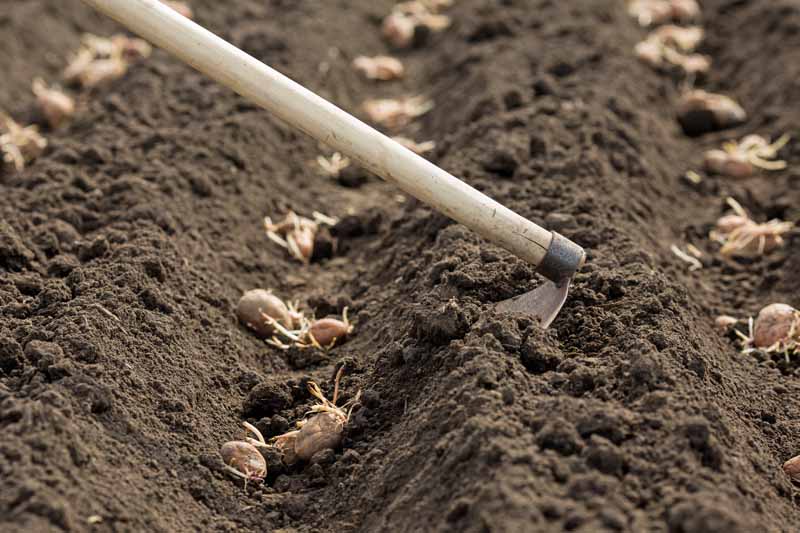
Growing Potatoes Under The Mulch
A great way to grow your Potatoes without a lot of soil is by growing potatoes under the mulch. It is pretty easy; just follow these steps.
- Potatoes are comparatively easier to grow. You can also grow potatoes across the surface of a planting bed by simply placing the seed potatoes and covering them with mulch. Growing potatoes under the mulch do not need any digging, but you just have to hill up the tubers to let them grow.
- When you put a seed potato on the planting bed, lose a few inches of soil. Cut the seed side down and plant them one foot apart. Make sure each seed has two to three eyes, and after planting it, cover the seed with one foot of mulch. This could be anything shredded leaves, leaf mould, hay, straws, etc.
- When the shoot of your potato starts to grow and is about 6 inches tall, add more mulch. Cover everything leaving the topmost leaves. Continue repeating the process as your plant grows.
- Over several weeks, keep checking under your mulch periodically for any developing tubers. Remember to keep your plants covered with mulch for several inches to keep your tubers from turning green.
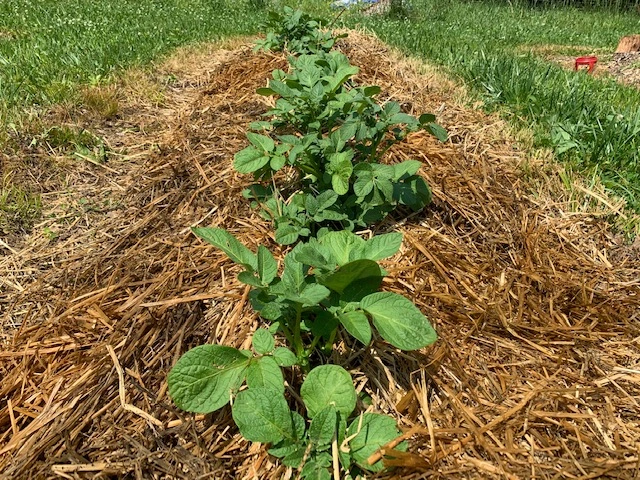
Things to Keep in Mind When Using the Mulch Method
Mulch isn’t soil. So, it does not have as many nutrients as the soil. So, you might not yield as much as you are hoping to. You can feed the mulch with fish emulsion once the sprouts start to emerge. This will help with the quality of your harvest.
Growing Potatoes in Landscape Fabric
You can also grow potatoes using a fabric. It is convenient, and the steps are very easy to follow.
- It is easy to grow potatoes under a black landscape fabric as well. You just have to place the seeds on a planting bed at a distance of one foot and cover them with black landscape fabric. This black fabric will stop all the light, and tubers will grow like they would underground.
- As plants start to grow, you must cut slits in the fabric so that plants can grow up. However, make sure your tubers are under the fabric and are not in direct sunlight. When you have to harvest the potatoes, just roll back the fabric and get them.
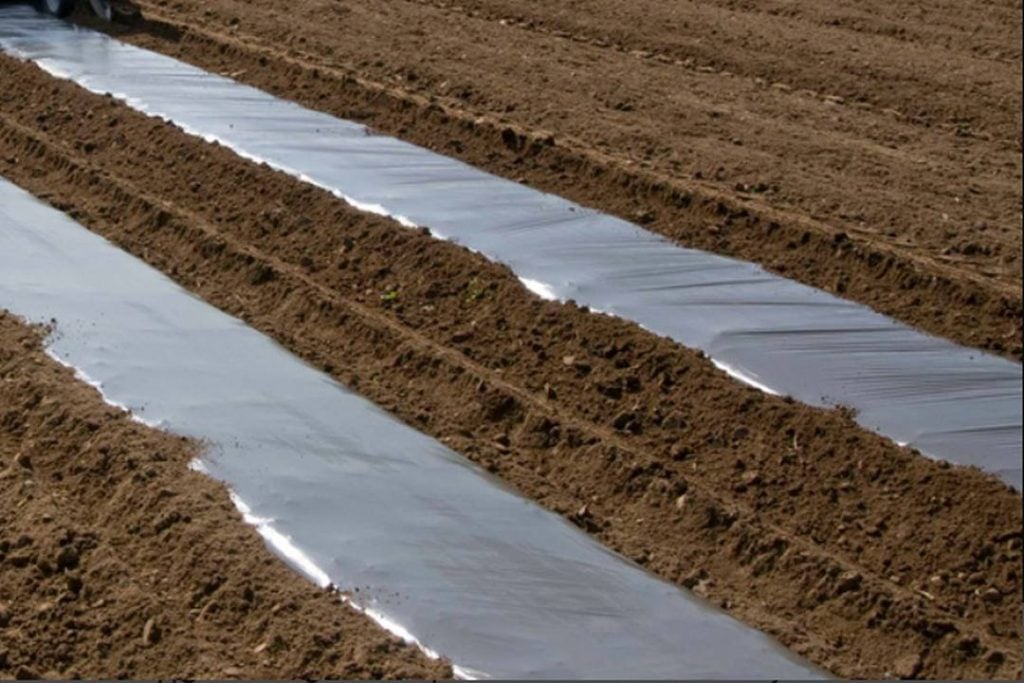
Growing Potatoes In Container
Another way to grow potatoes is in containers. You can use a wooden box or stack old tires for this. You can also get special growing bags to grow these potatoes. All you have to do is, Make a thin bed of soil in the container and plant the seed in the bottom. When the plants grow about 8-10 centimetres, cover them with more soil leaving the top two leaves exposed. Continue the process till your potatoes are ready to be harvested.
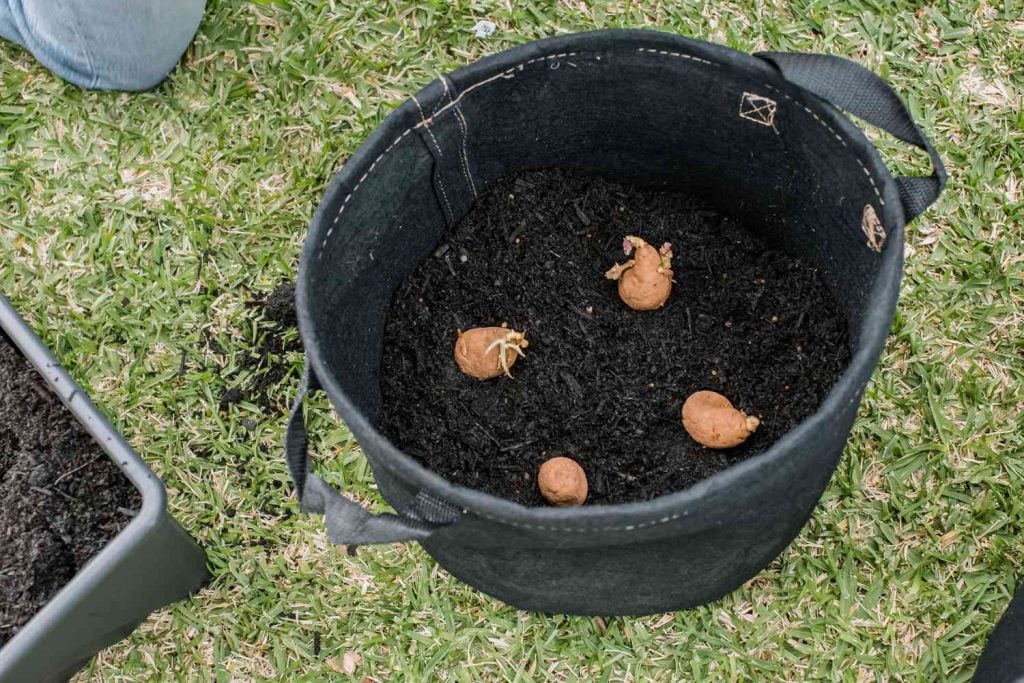
4. Harvesting the Potatoes
When your potato stems and leaves start turning brown and flowers start to fade, you can conclude that your tubers have matured. To harvest your potatoes, follow these steps-
- Use a spading fork and dig up these potatoes. Lift them without damaging the skin. You can also use your fingers to do this. You can harvest whole plants or generally break off the tubers. Test on one or two potatoes before you lift the entire crop.
- You can harvest your potatoes at any point after they start to mature. If you are harvesting them young, you are harvesting new potatoes. These potatoes are slightly tender and have soft, delicate skin. It will come off if you rub them twice or thrice. Remember, new potatoes cannot be stored and have to be used immediately.
- If you are waiting for them to mature properly, that is, for them to have hardened skin, let them fully grow. The tops of the plants will die, and once they have died, let the potatoes be in the ground for a few weeks. This will toughen their skins, and they will be better to store. Once you have gotten your potatoes out of the soil, you can store them. The best way to store potatoes is with dirt on them. If you wash them, they might start to go bad soon.
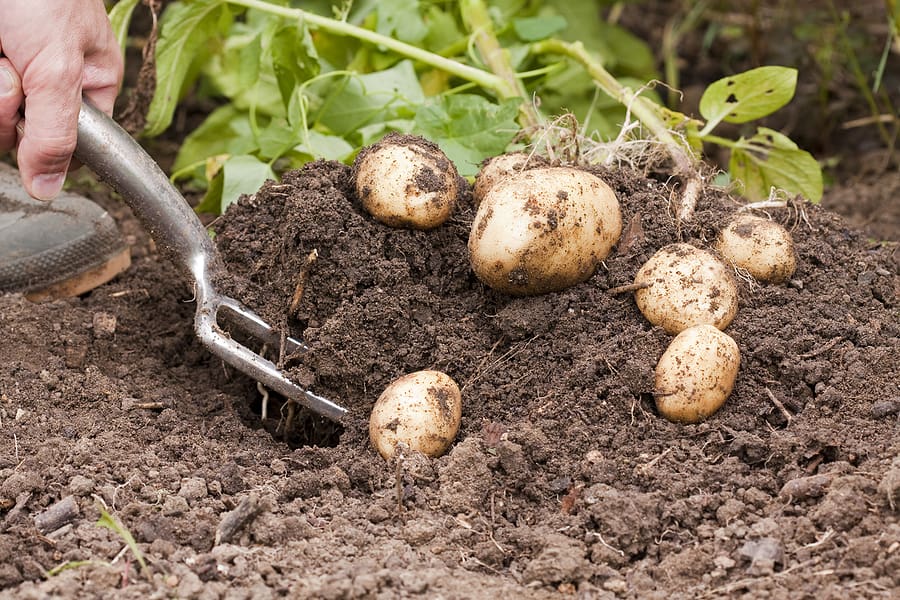
5. How to Store Potatoes
If you plan to eat the potatoes within a few days from harvesting, storage won’t be a problem. However, if you are storing them for longer, you will have to store them in a dark, cool place. It will be easier for you to store potatoes if you have a damp cellar.
Potatoes use oxygen and give off carbon dioxide even after you have harvested them. So, make sure wherever you store these potatoes, they have good ventilation. Don’t put them in airtight containers. You can use perforated bags for easy storage.
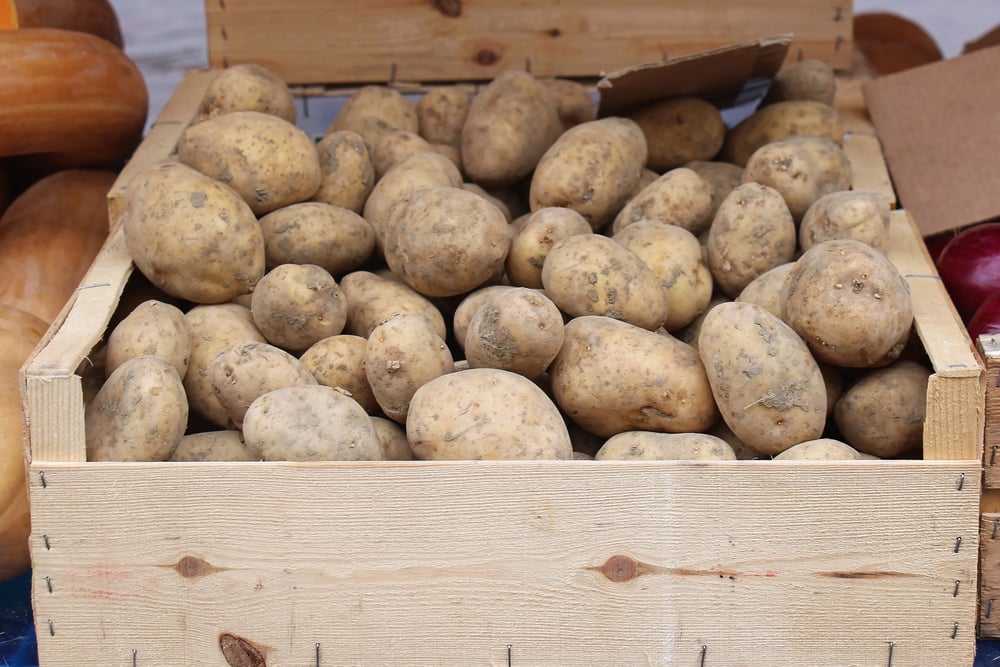
Caring for Potatoes
While growing potatoes is an easy task, they also need a little care and attention.
A few things to keep in mind are:
- Water the soil to keep potatoes evenly moist. Avoid making the soil wet. Potatoes need moisture to grow, but too much water can destroy them.
- Do not compact the soil around the potatoes. Use boards between the rows to save yourself from walking on the soil.
- Protect the tubers of the potatoes from sunlight. If you are not careful enough, they will turn green. If potatoes start turning green, they become bitter in taste and a little toxic. It’s best to avoid this situation.
- Care for your potatoes; treat them if they get infected at the right time to save the whole harvest.
- Store them properly for a longer usage duration.
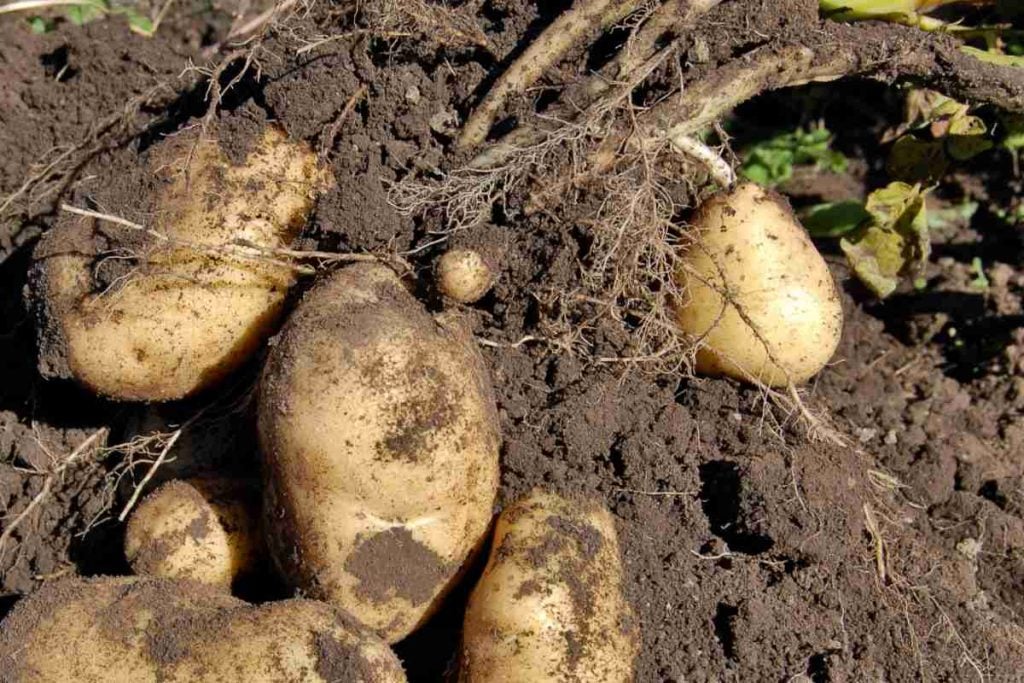
Can You Grow Potatoes All Year Round in the UK?
Potatoes are really easy to grow and can grow all year long in most conditions. So, the answer to, Can you grow potatoes all year round in the UK, is YES! However, there are a few things to keep in mind if you are planning to grow them all year long. If you want to successfully and reliably grow potatoes in winter, you will need some cover, like either a greenhouse or a polytunnel. There are some steps that you will have to follow depending on what time you are growing your potatoes.
Spring Harvest
Generally, growing potatoes is the hardest in spring in the UK. Since Potatoes are not really hardy vegetables, harsh frost is their biggest enemy. You will need something like a heated greenhouse to be able to grow potatoes at this time of the year. However, if the heated greenhouse is also not enough, cover your plantings with fleece or try to insulate your greenhouse with bubble wrap. We suggest you use the Charlotte variety of potato seeds for spring harvest.
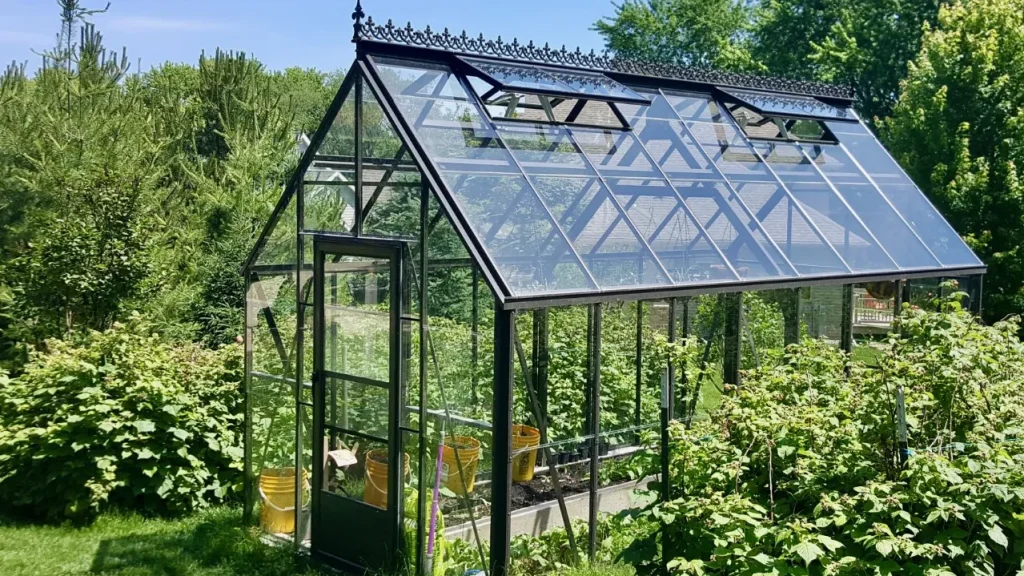
Summer Harvest
If you want a summer harvest, you must plant the first early varieties in spring. These will give you smaller “new” potatoes, but it’s possible for you to grow larger ones too. It generally takes 10-12 weeks to reach the harvestable size in this season. You must not have many issues with this harvest unless your country is facing some late frost.
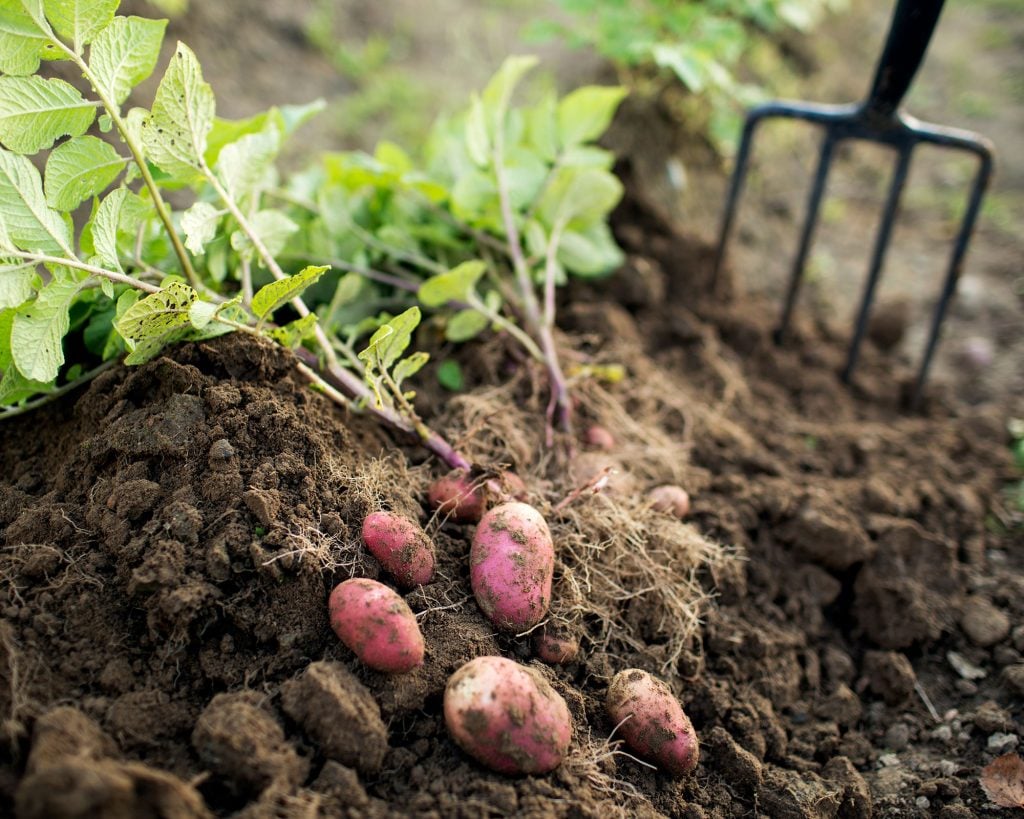
Autumn Harvest
Autumn is the traditional time for harvesting potatoes in The UK. It is the easiest time to grow this vegetable. You must start planting potatoes around March for the autumn harvest. The potatoes will take about 20 weeks to develop properly in this weather, and you will be able to harvest them around July or August.
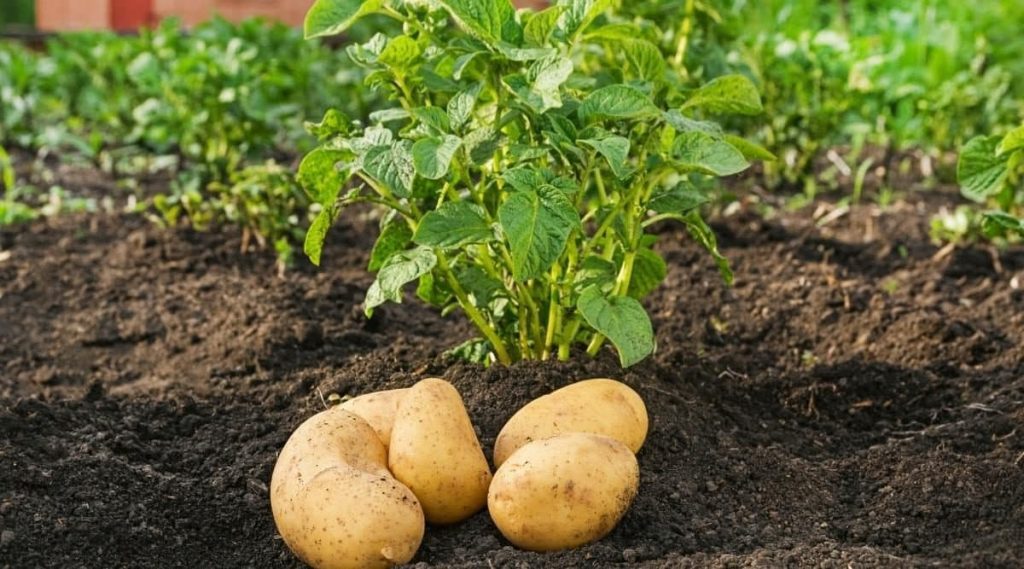
Winter Harvest
Honestly, Winter Harvest isn’t the toughest time to grow potatoes. Just like spring potatoes, you must use a seed variety like Charlotte. If you want a better and easier harvest, you must plant in late summer because the later you plant, is more likely you will have to use a greenhouse.
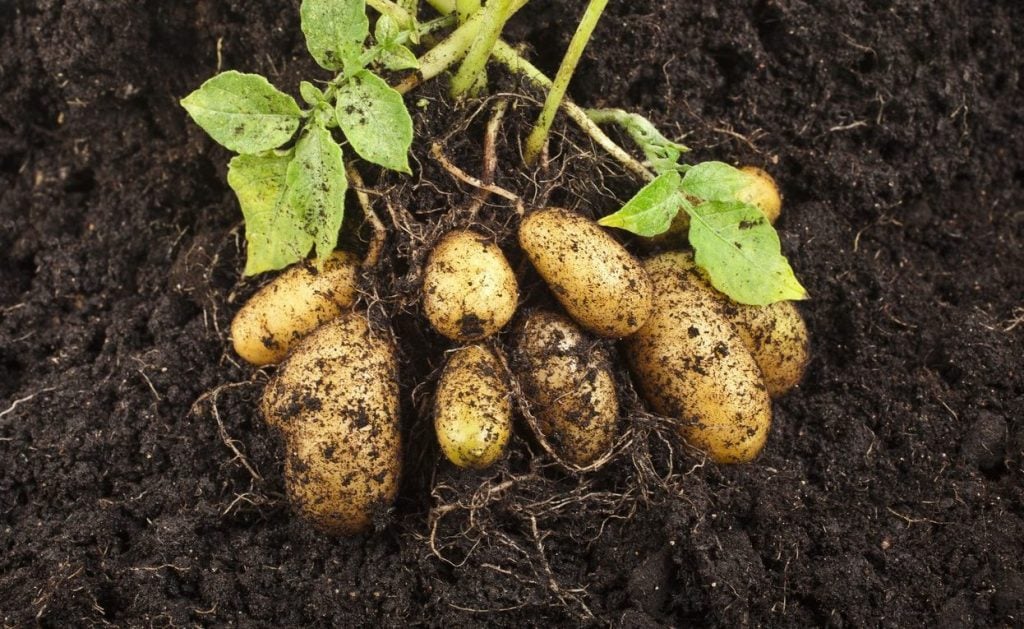
Conclusion
Potatoes are every cook’s best friend and are easy to grow. You can grow them multiple ways, at your ease, and all year round. Not only are they easy to grow, but they are also easy to store, and they come in handy whenever you need them in the kitchen. With little effort, you can get a great potato yield.
Potato seeds are available in different varieties in the market. Make sure you choose the right one, depending on what kind of yield you want. These vegetables are fun to grow and every gardener’s dream.
Do you dream of having a good potato harvest? This is your sign to get started NOW!

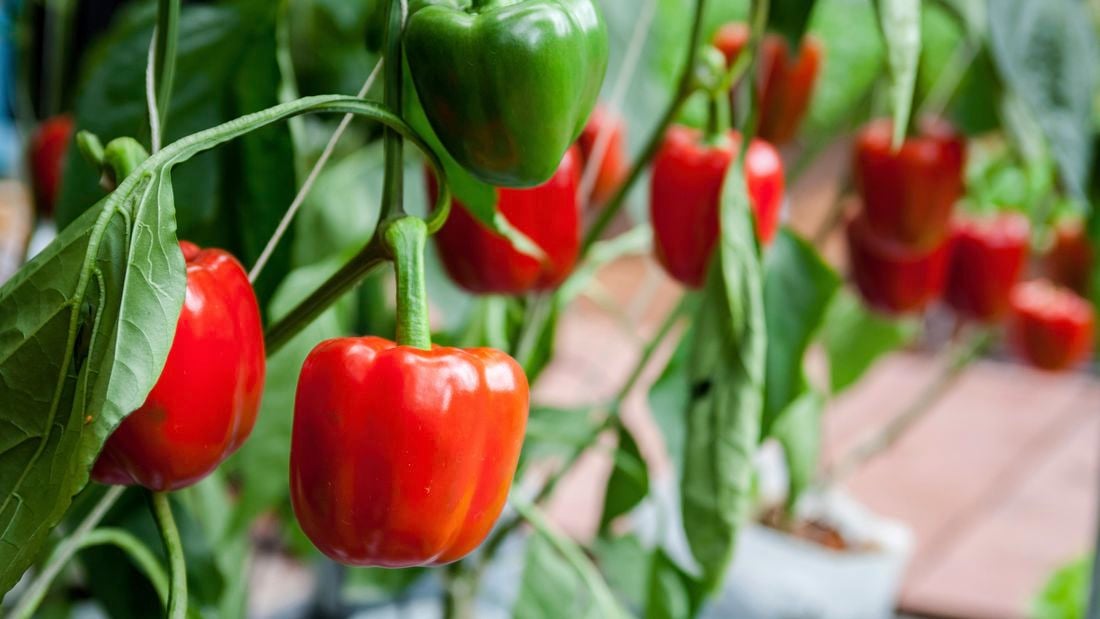
![When and How to Grow Broad Beans [UK]](https://www.thearches.co.uk/wp-content/uploads/How-To-Grow-Broad-Beans-scaled.jpg)
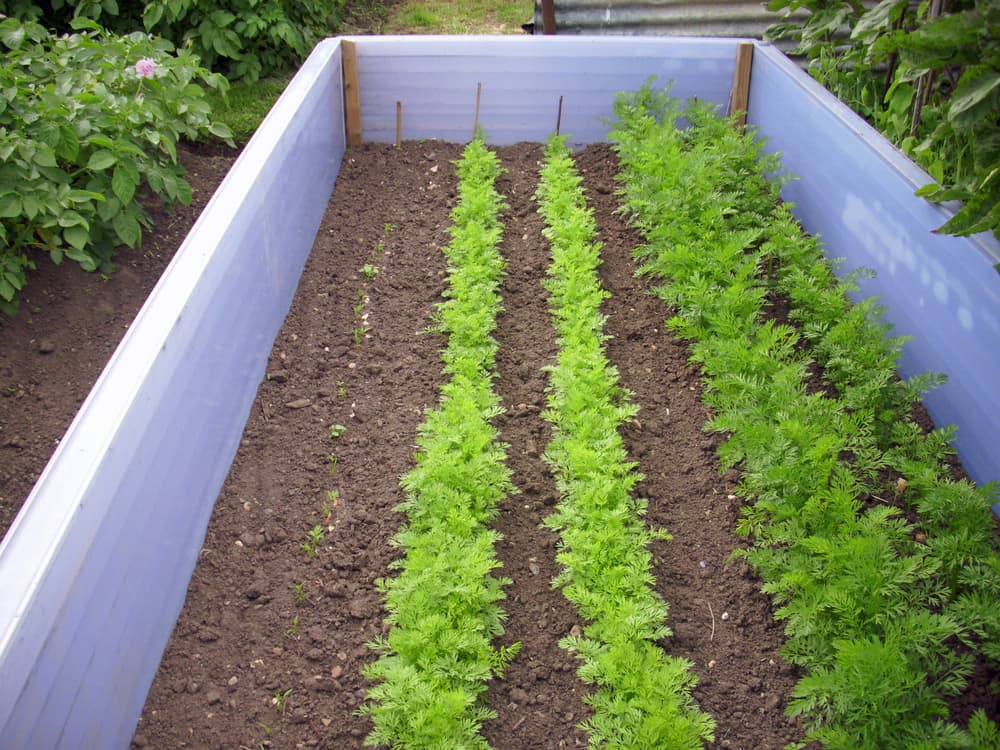
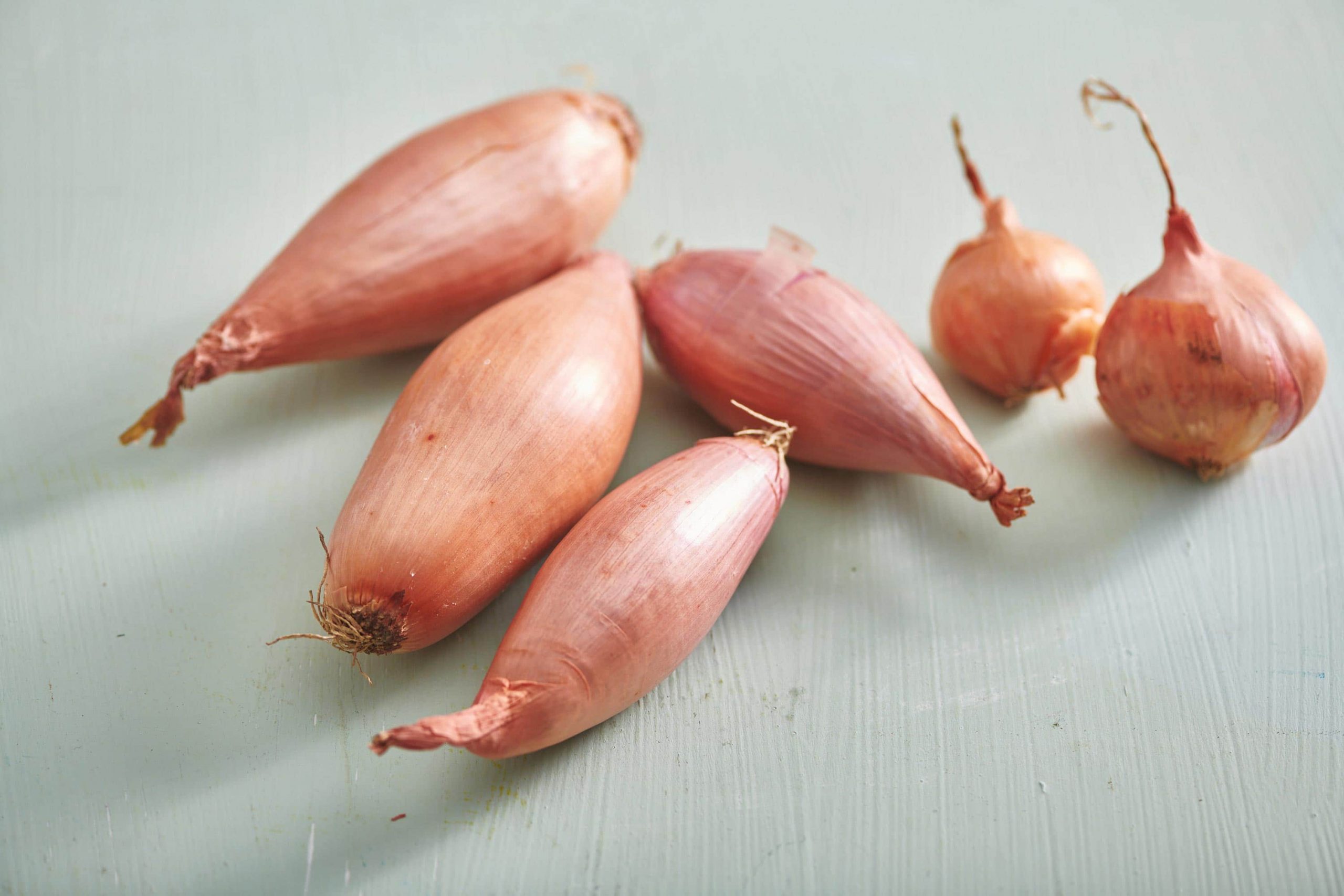
![How To Grow Rocket In Your Garden [4 Easy Steps]](https://www.thearches.co.uk/wp-content/uploads/How-To-Grow-Rocket-In-Your-Garden.jpg)
